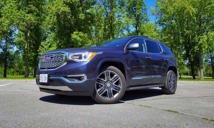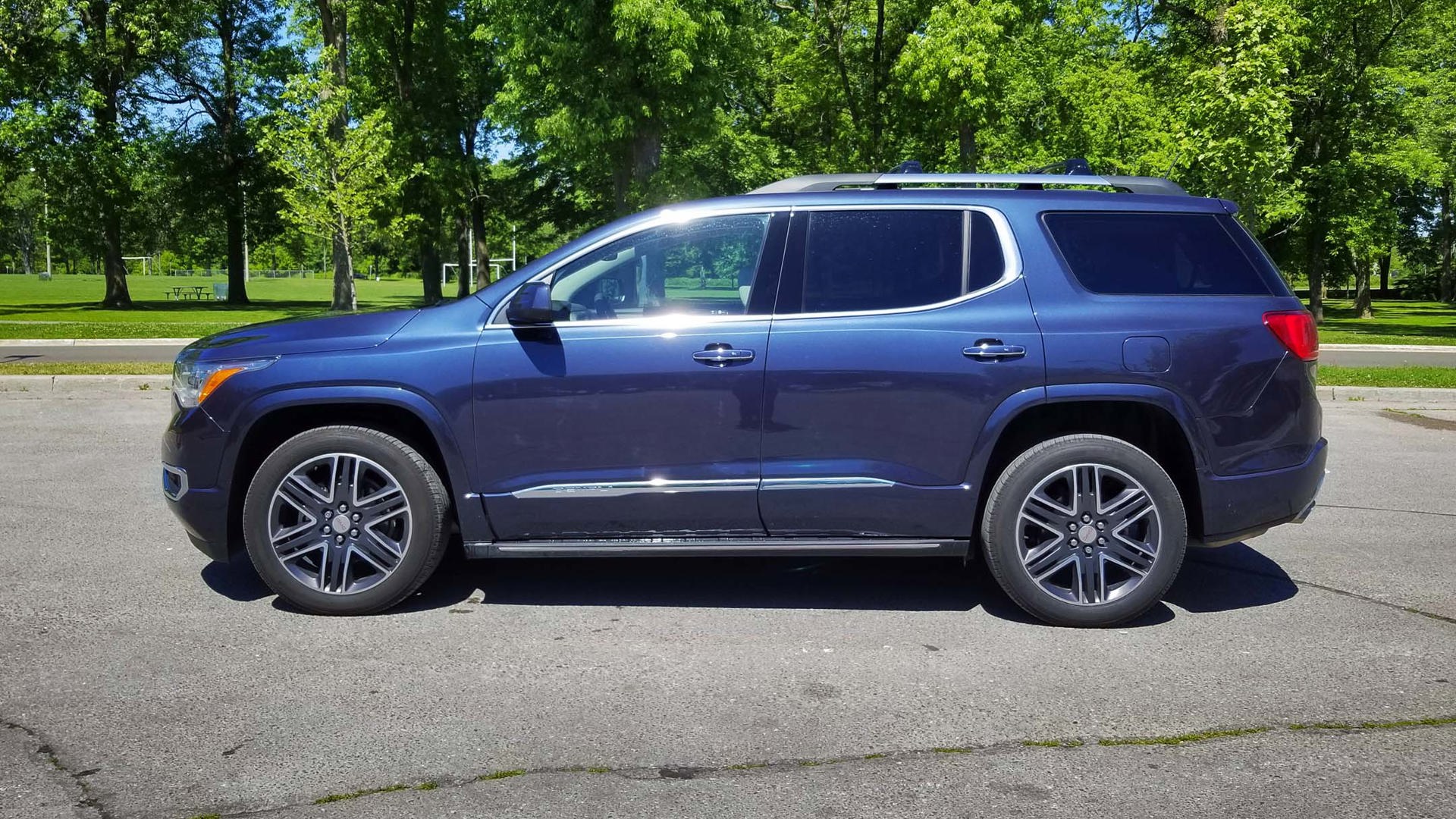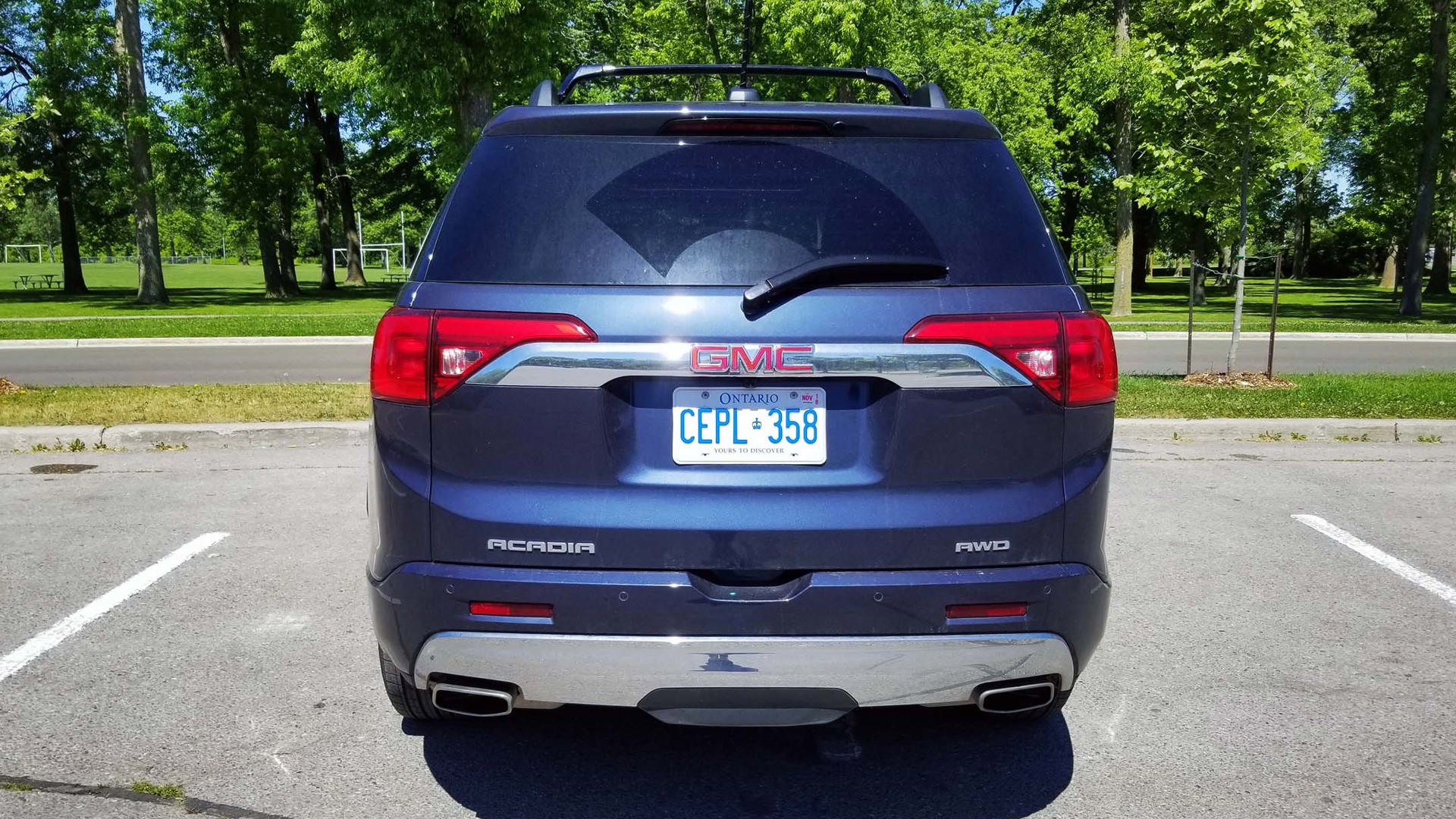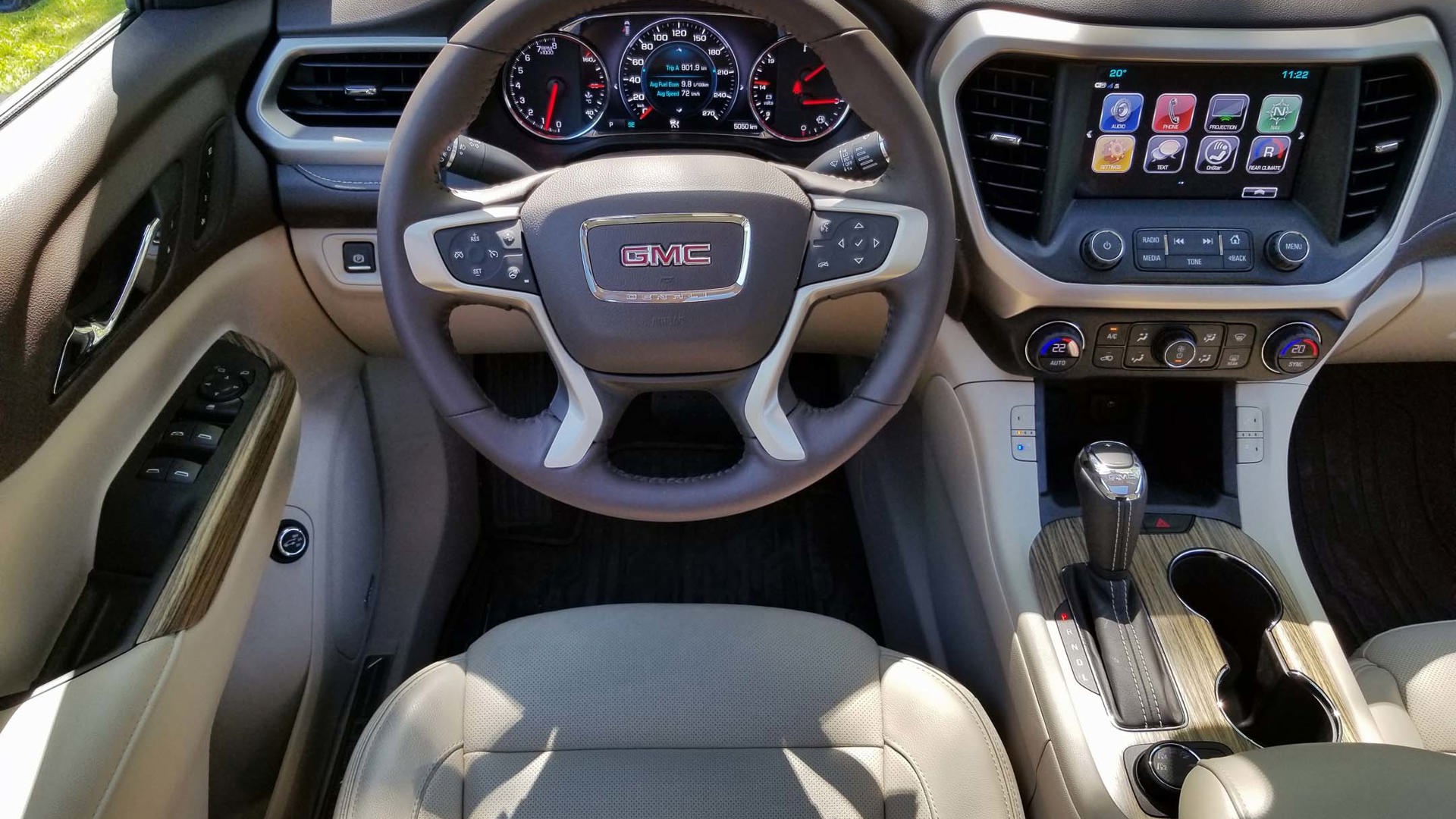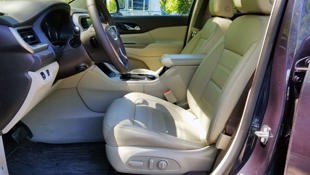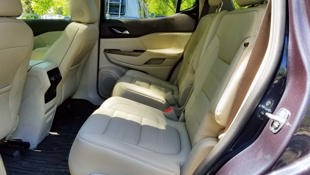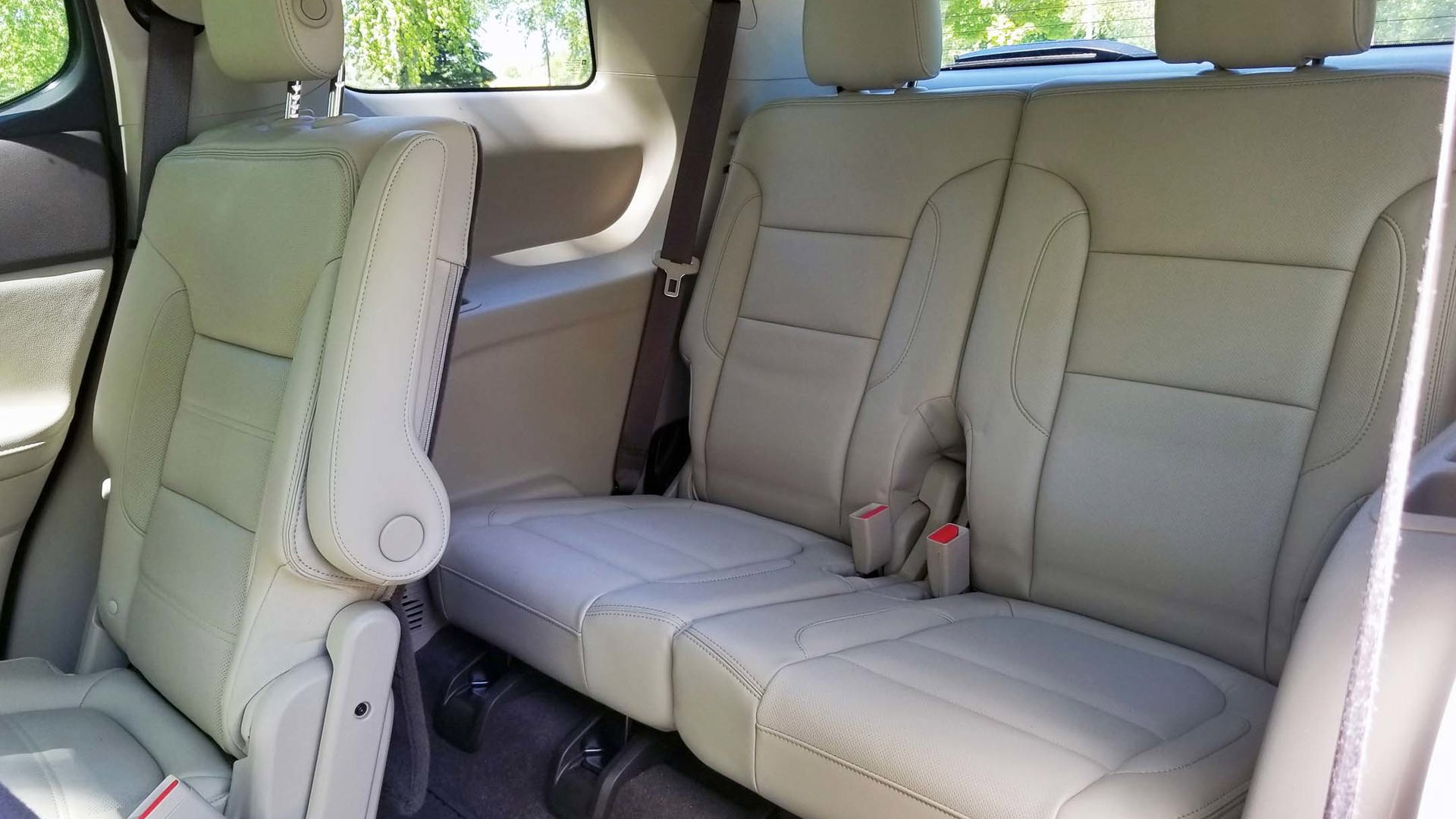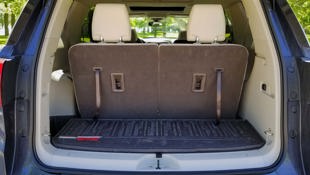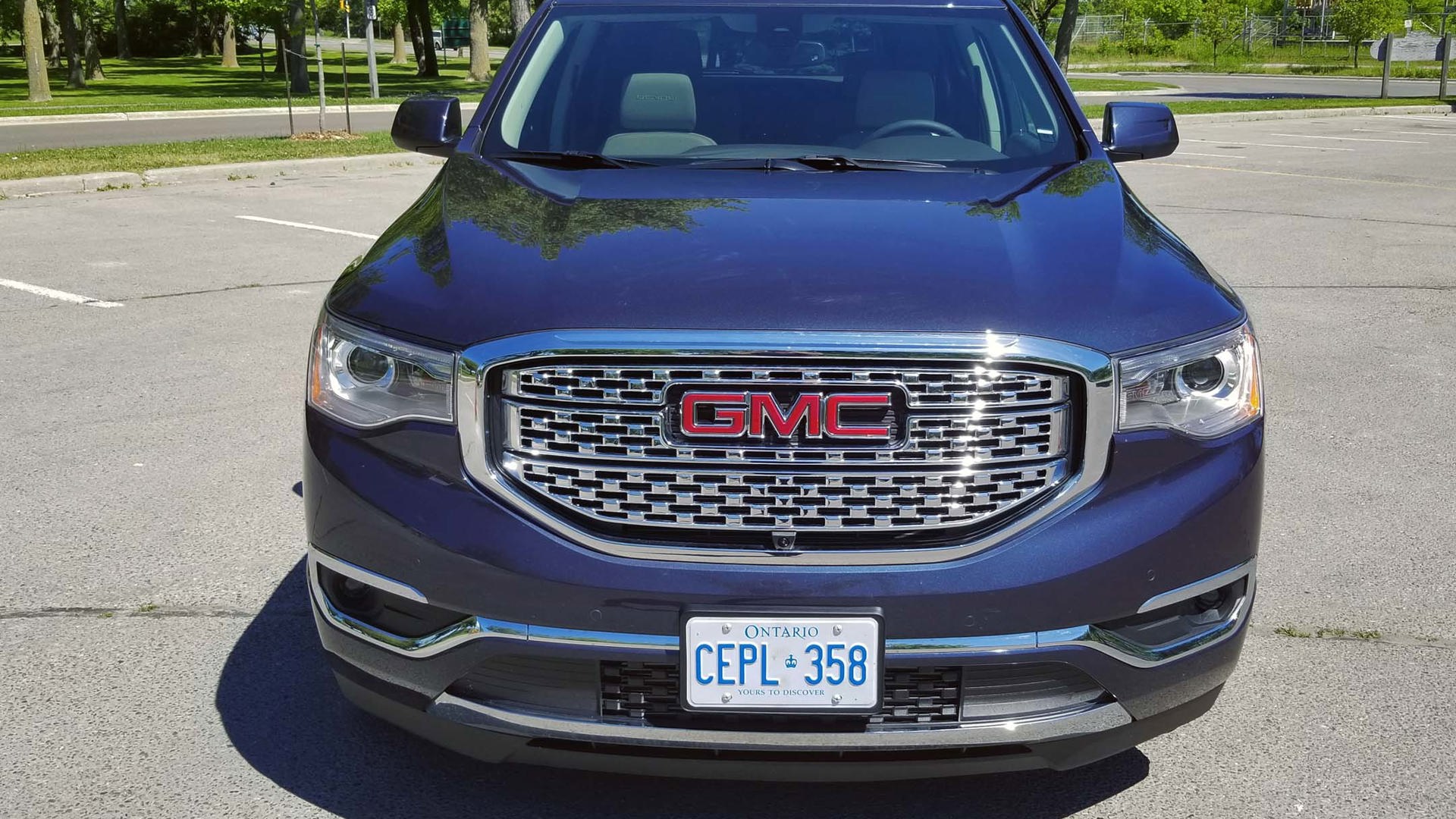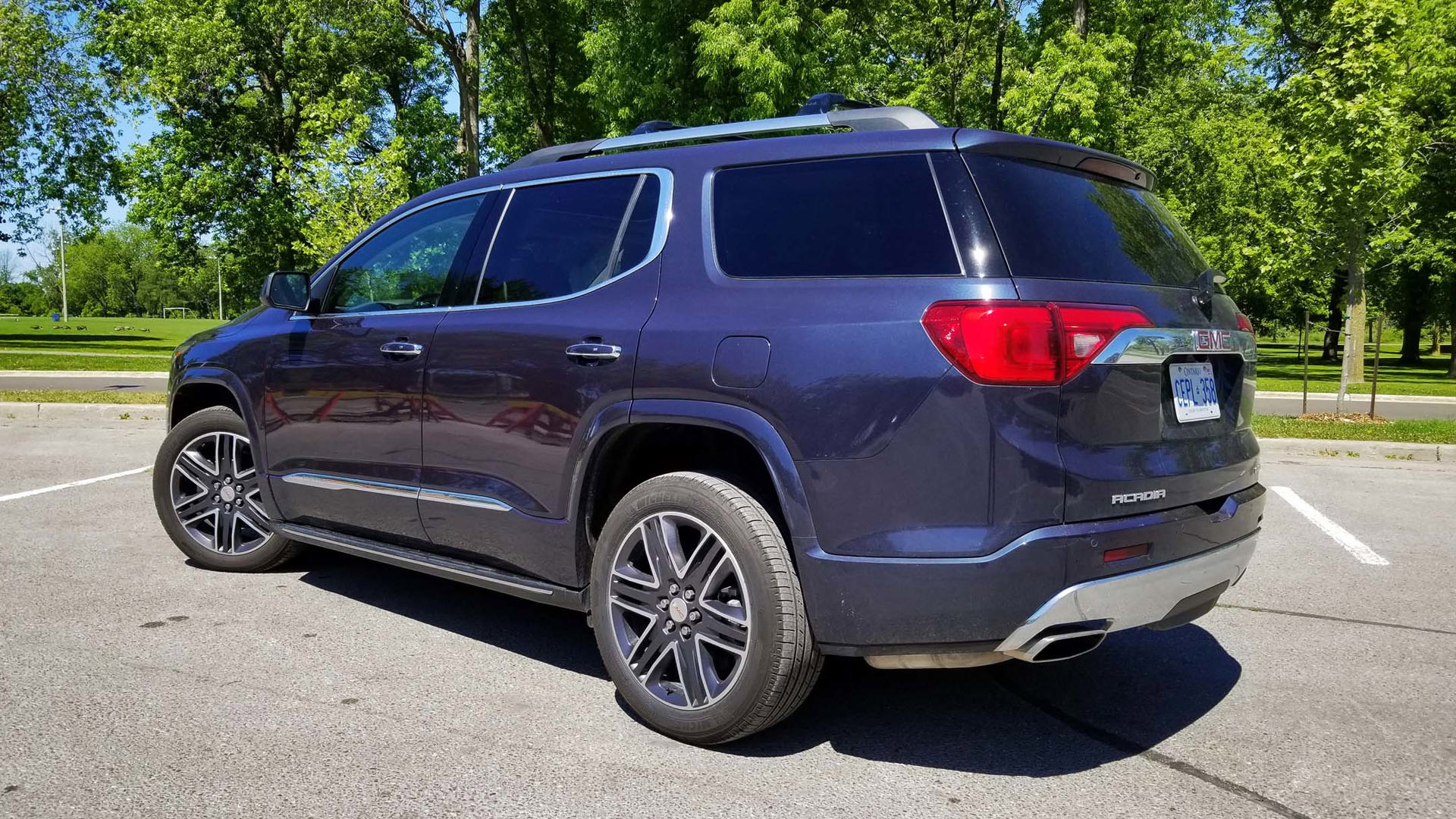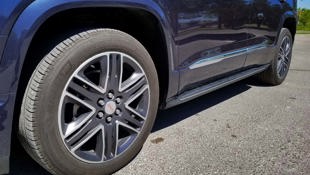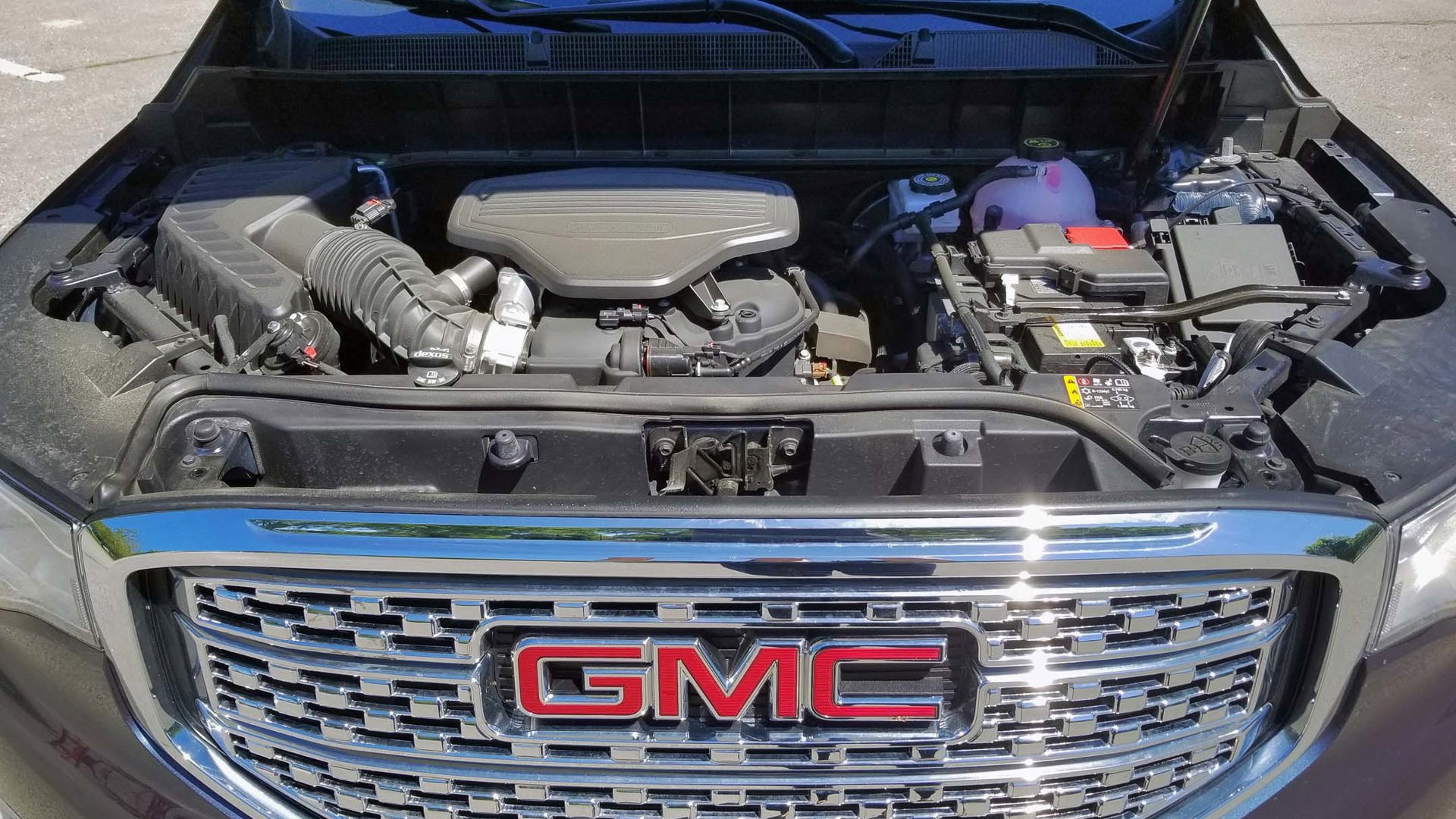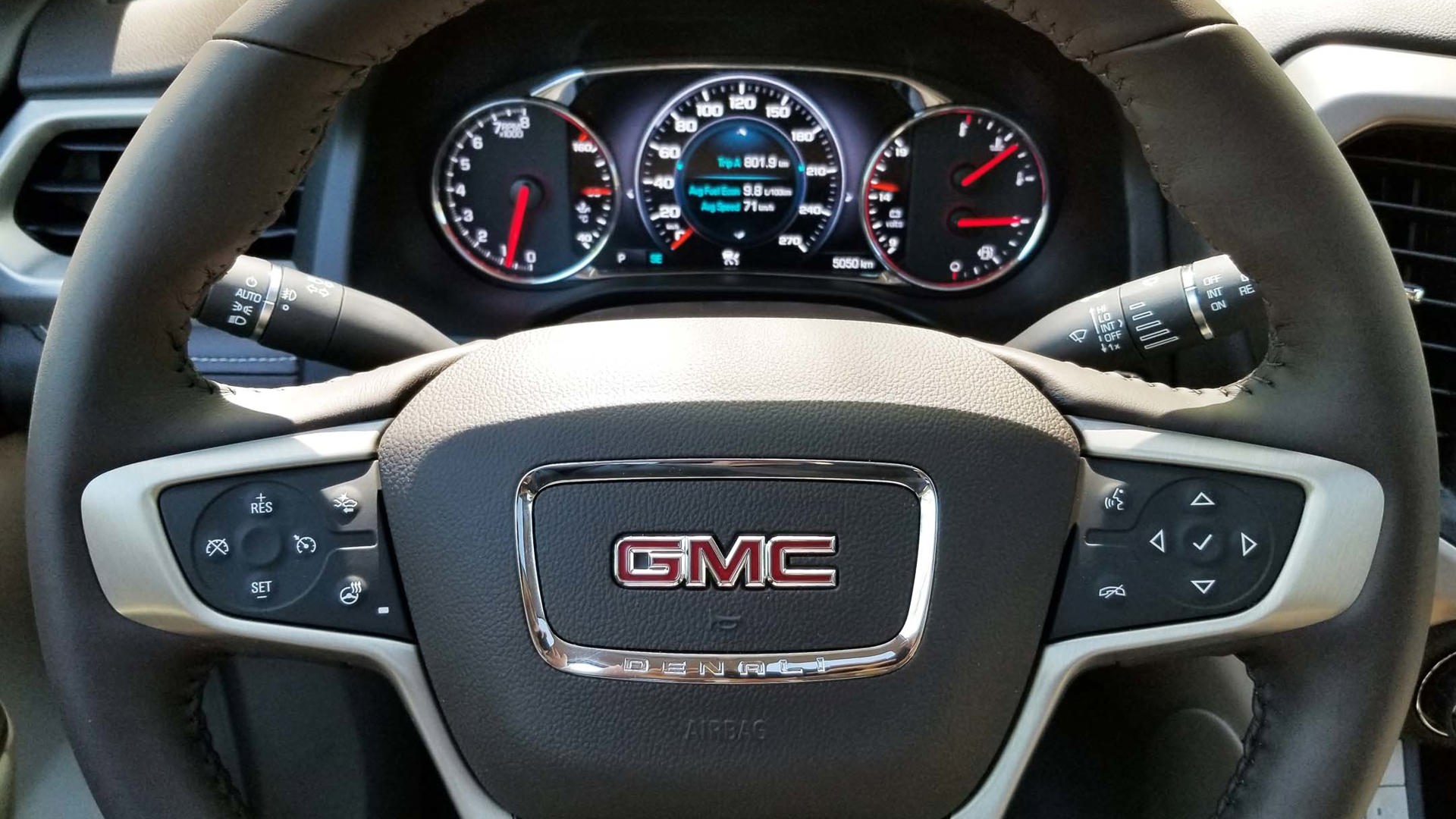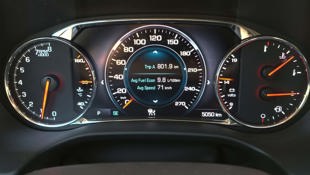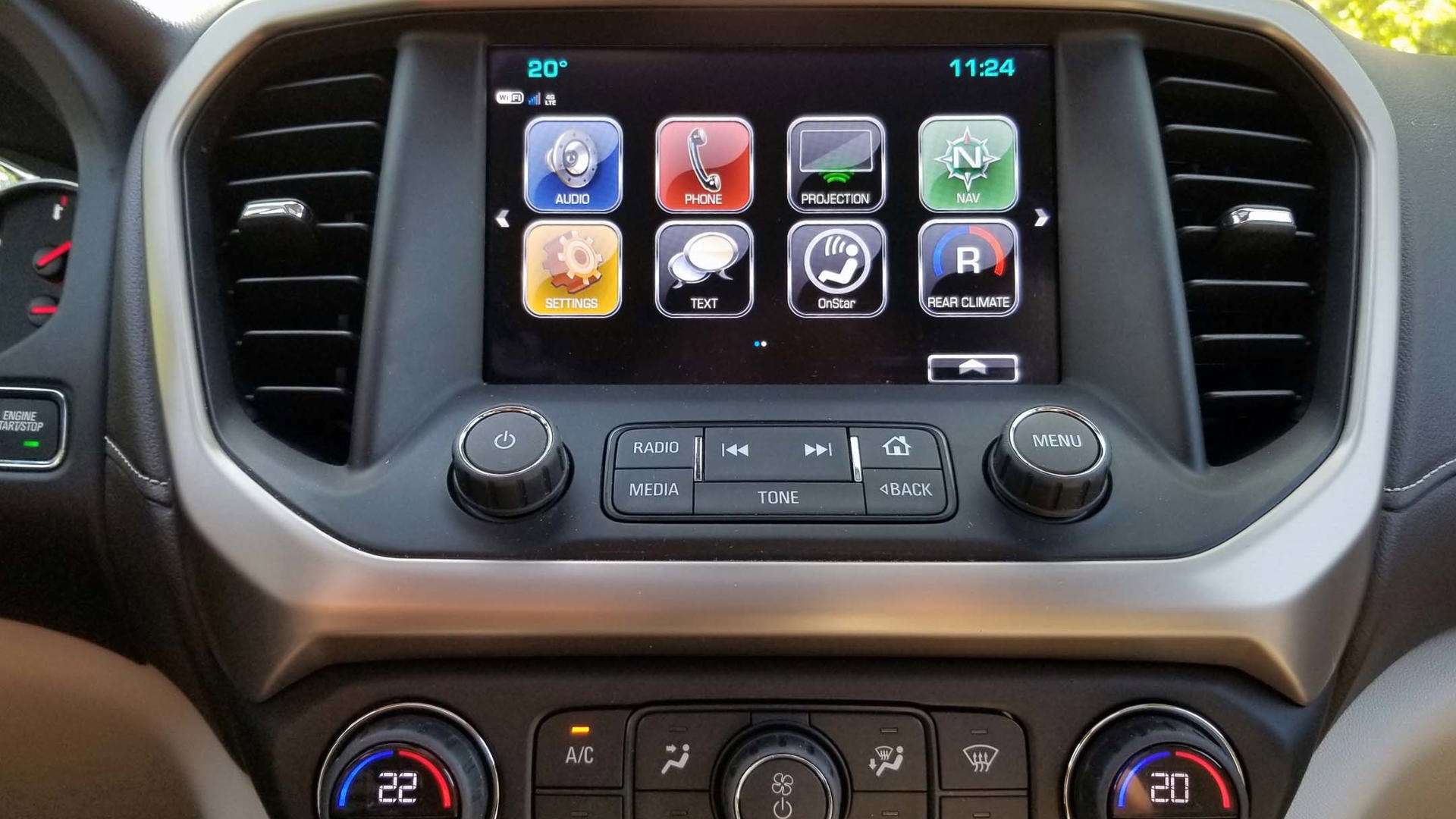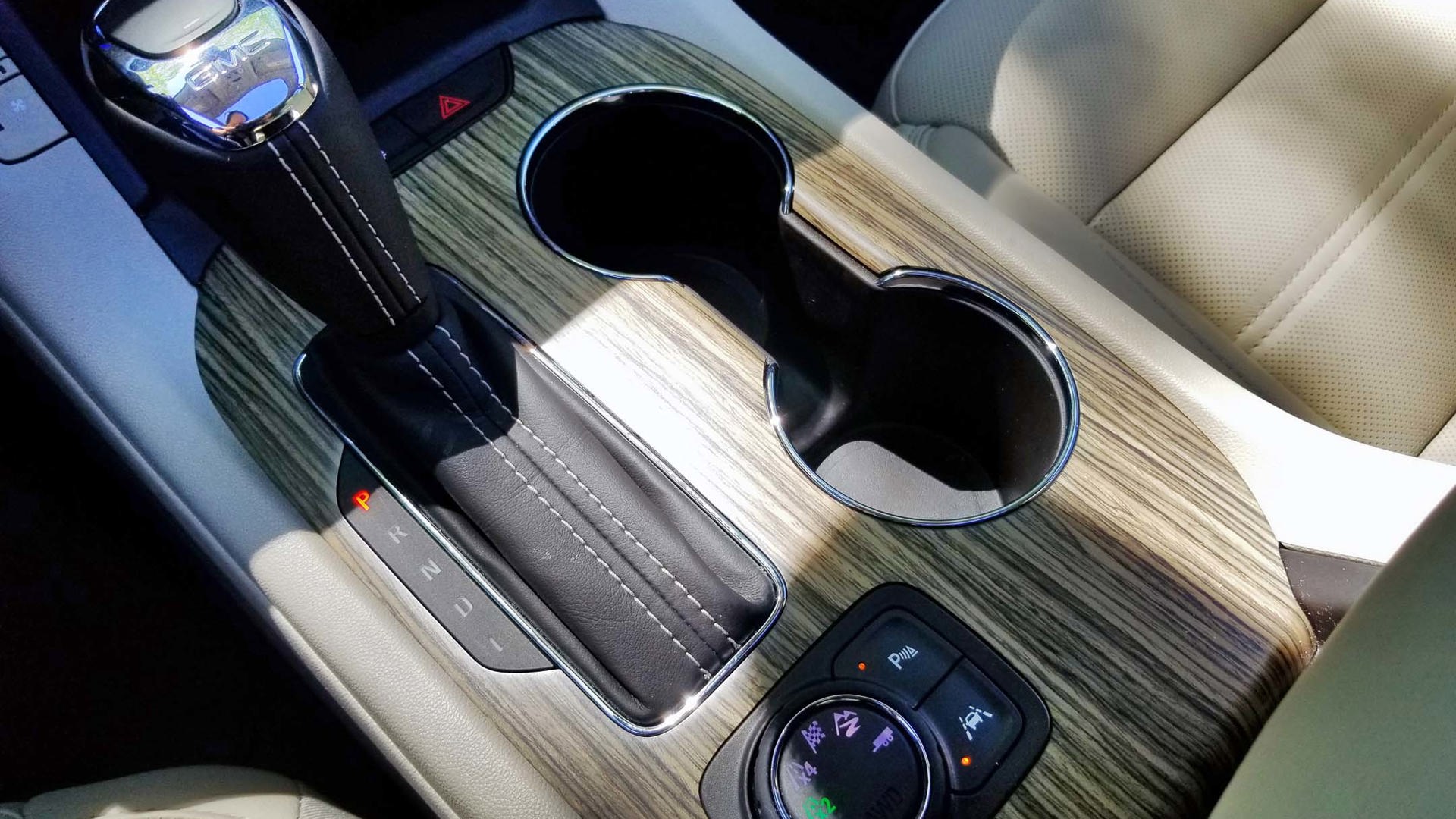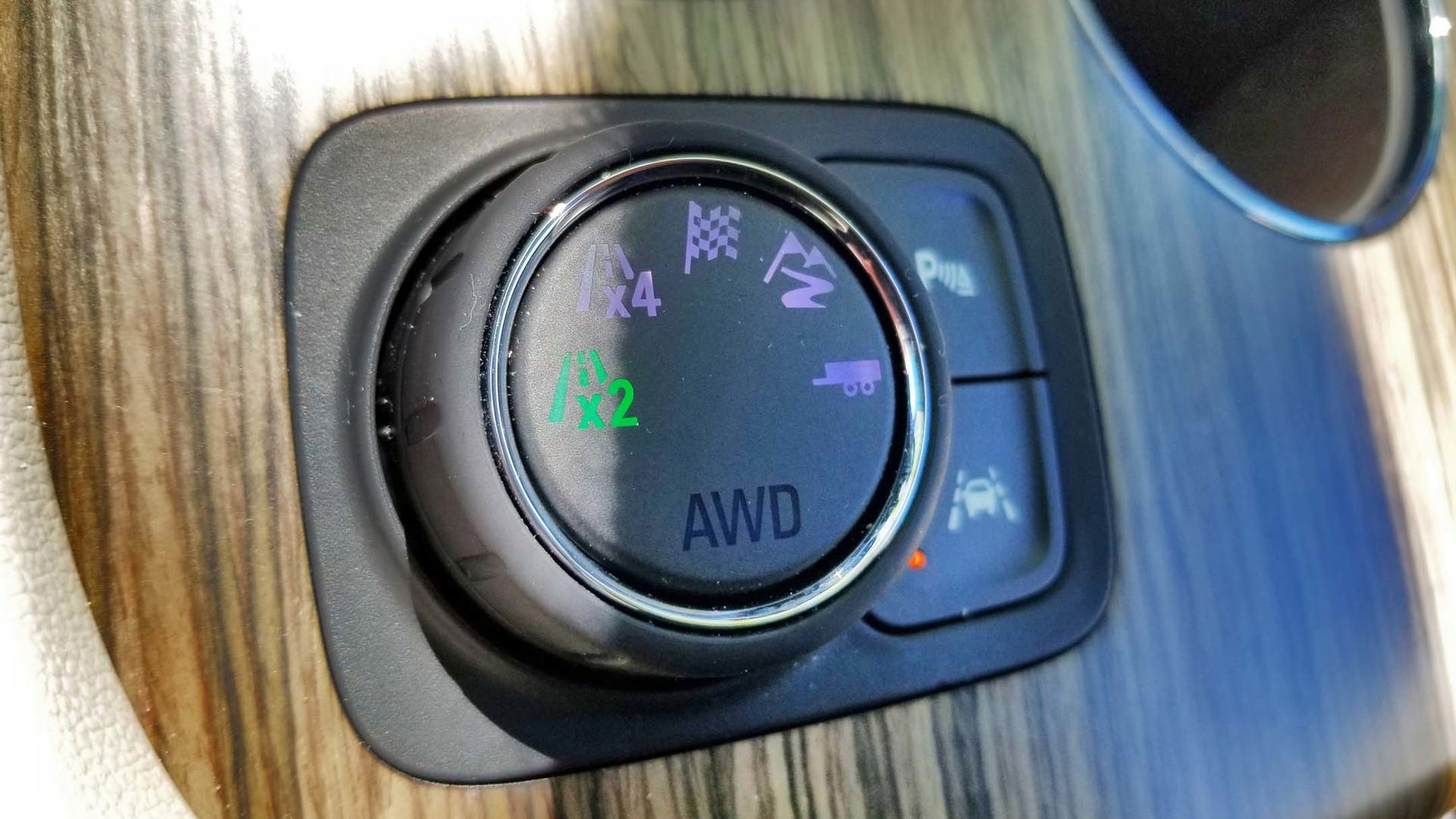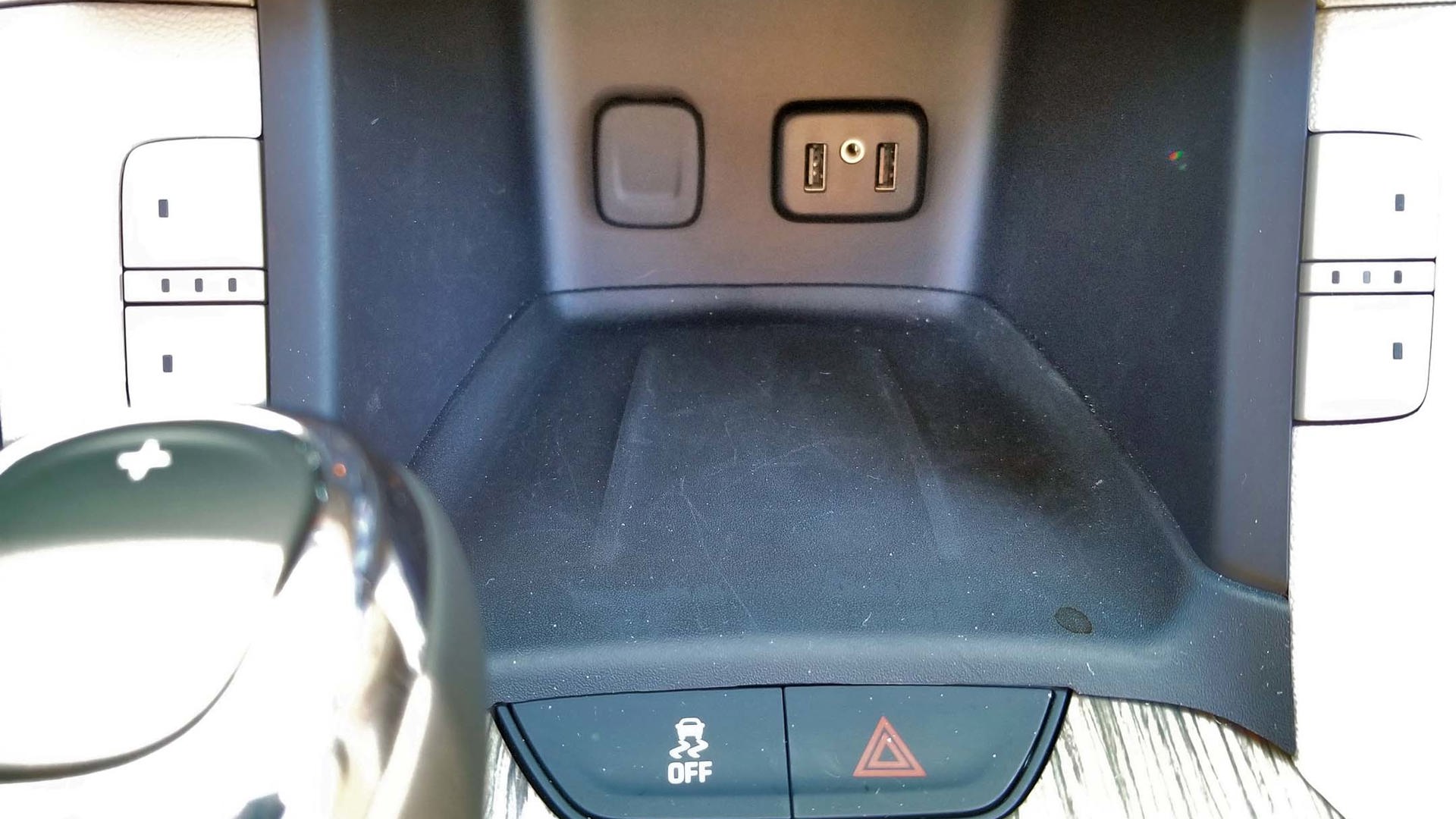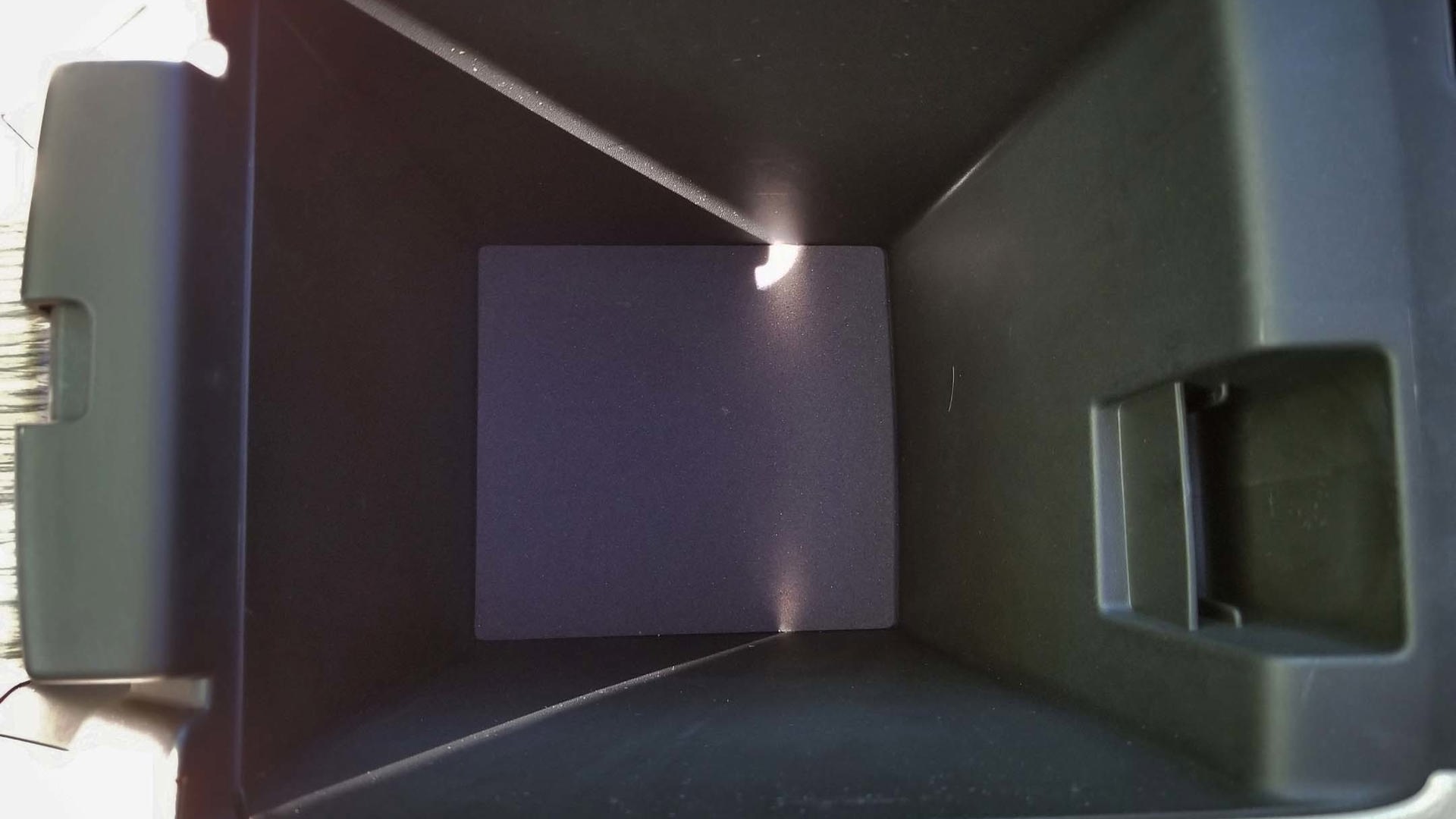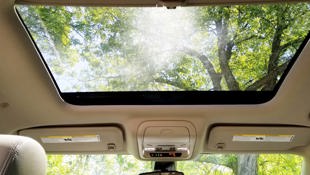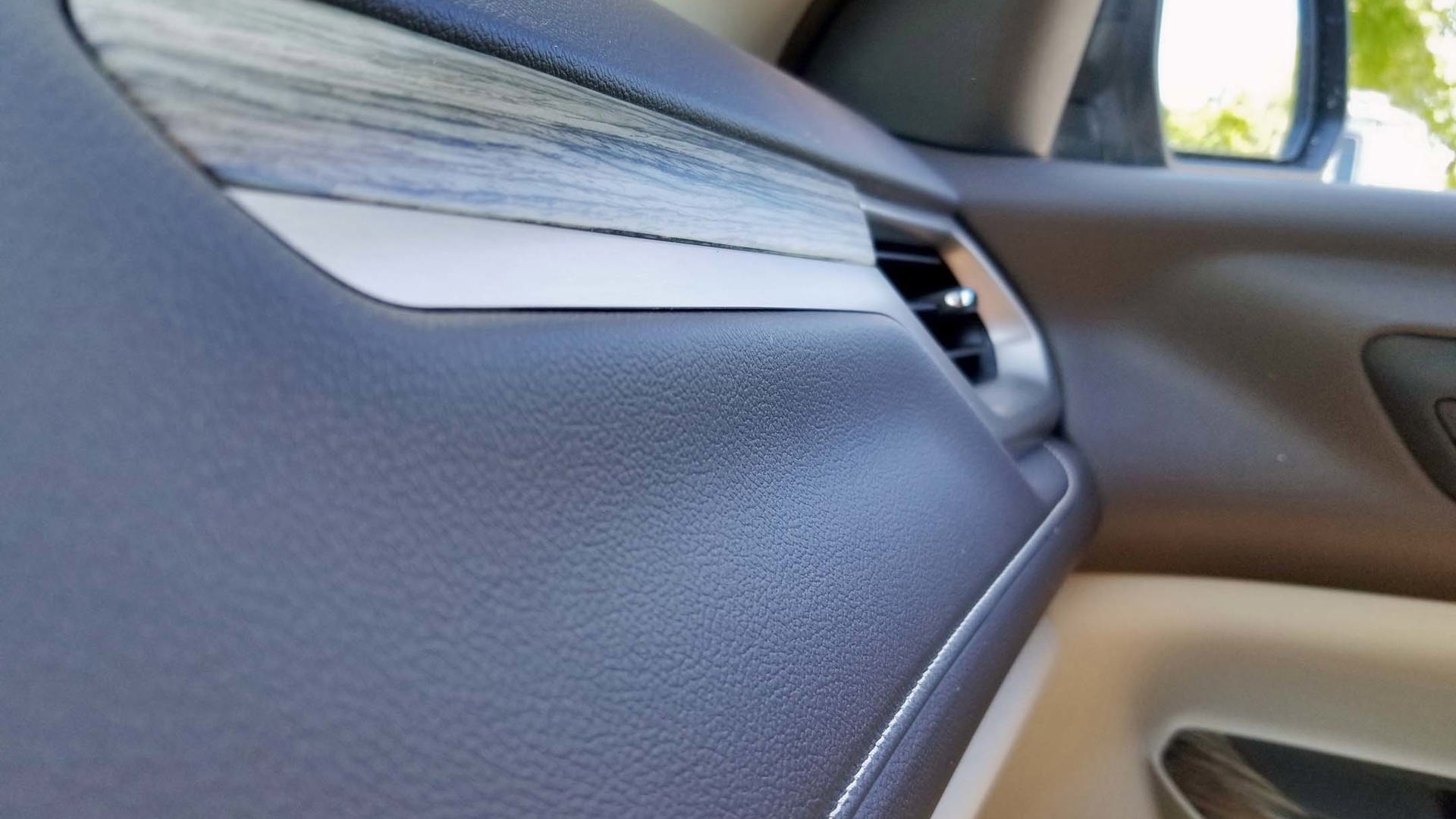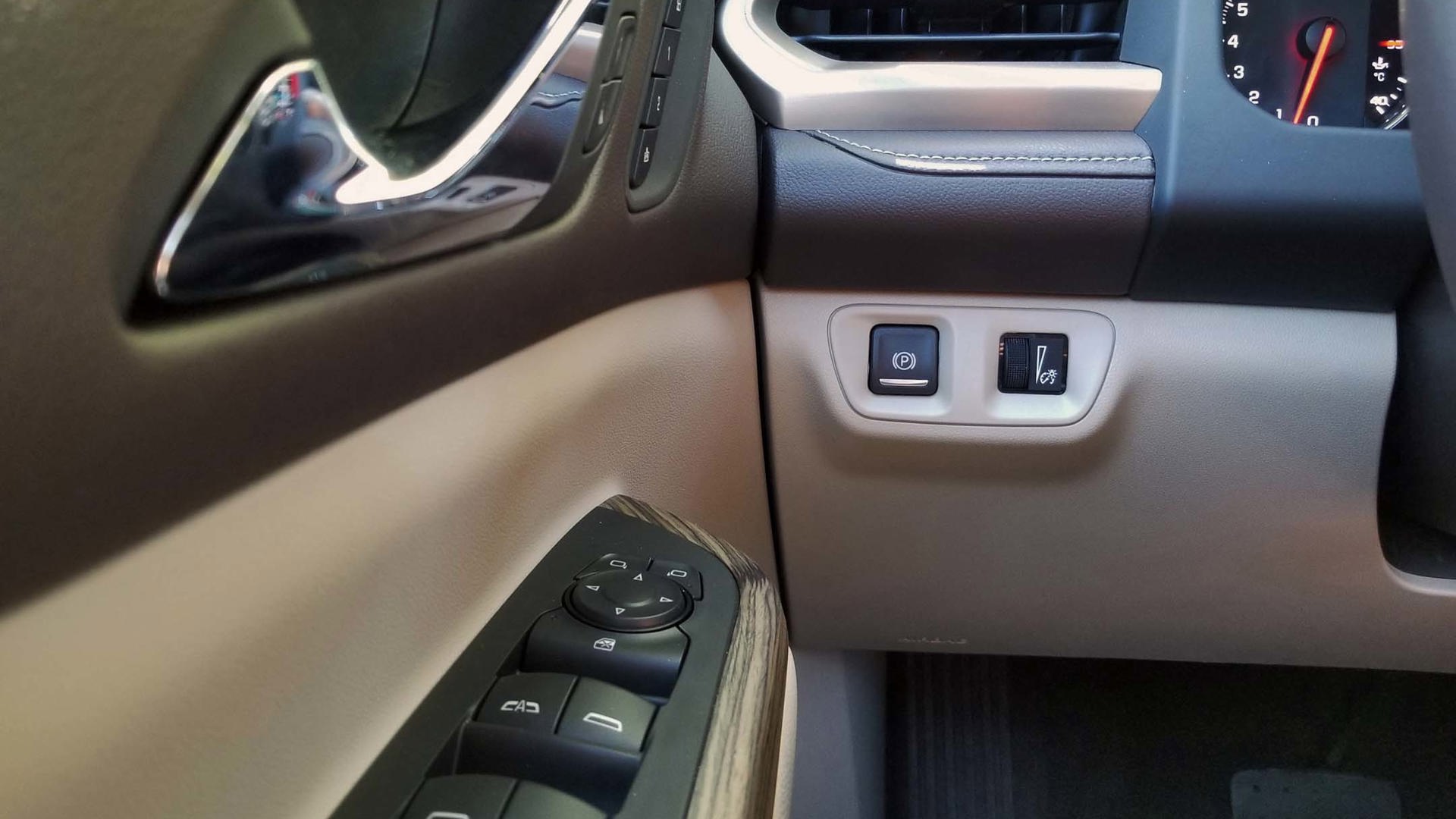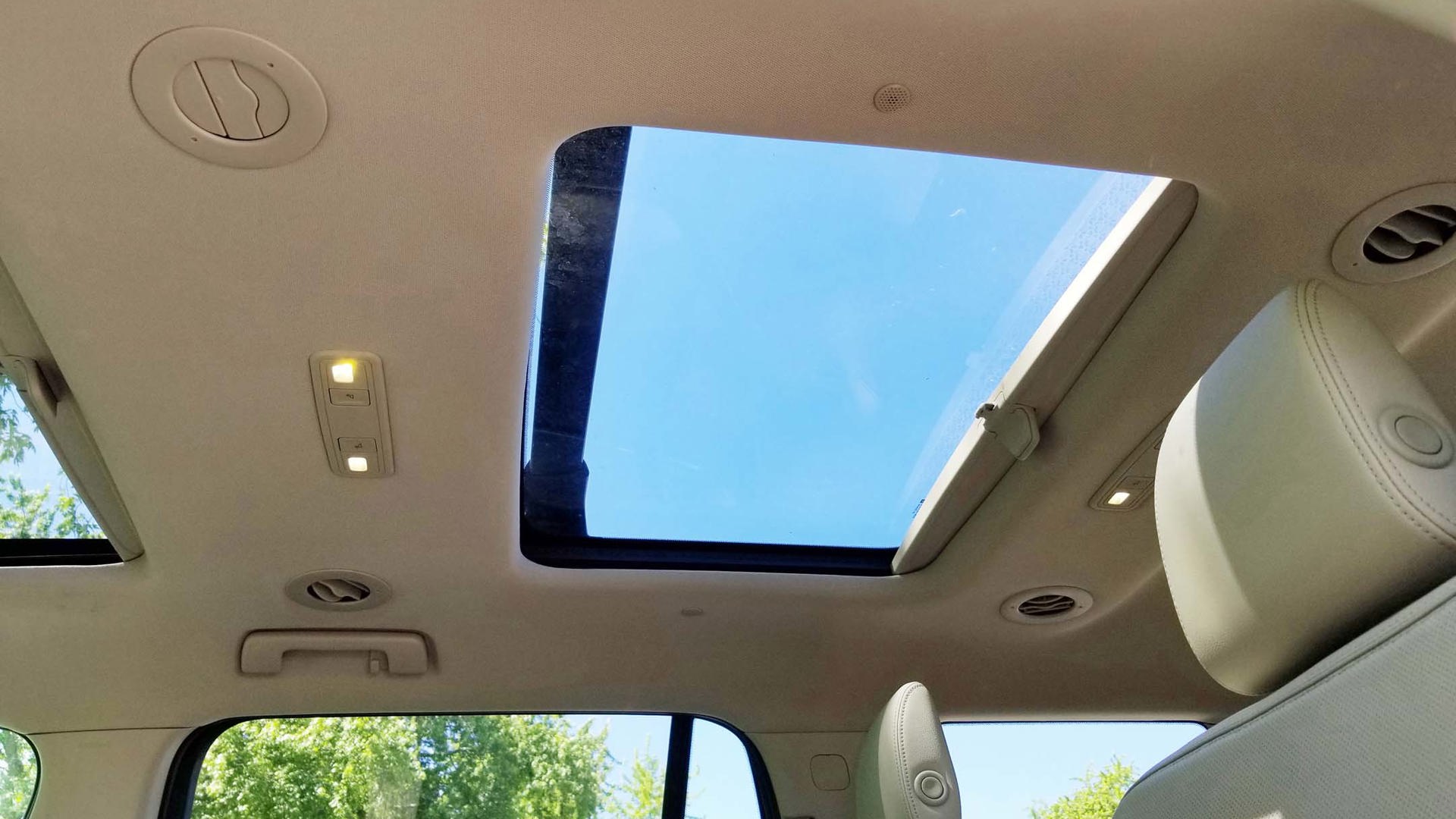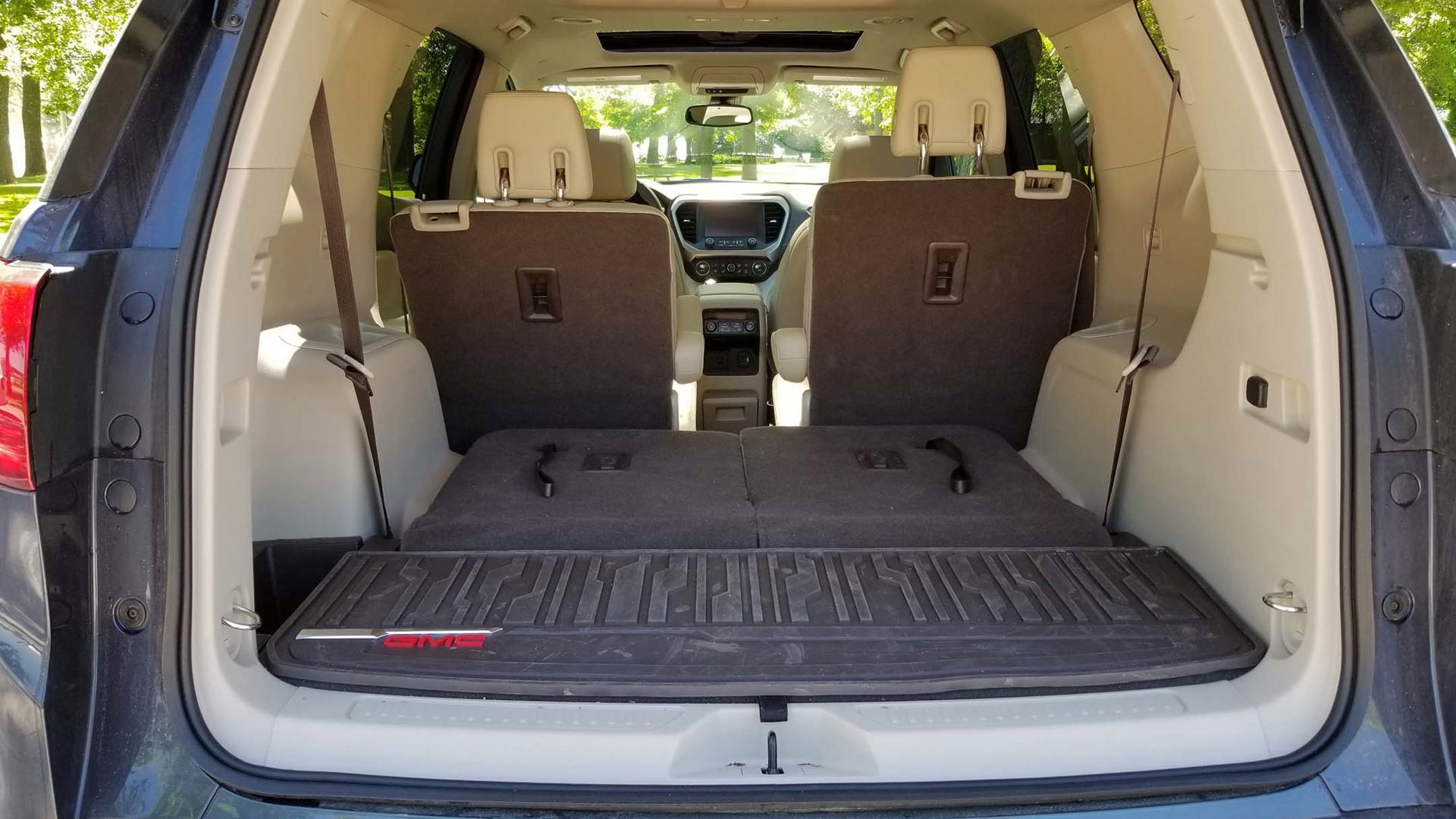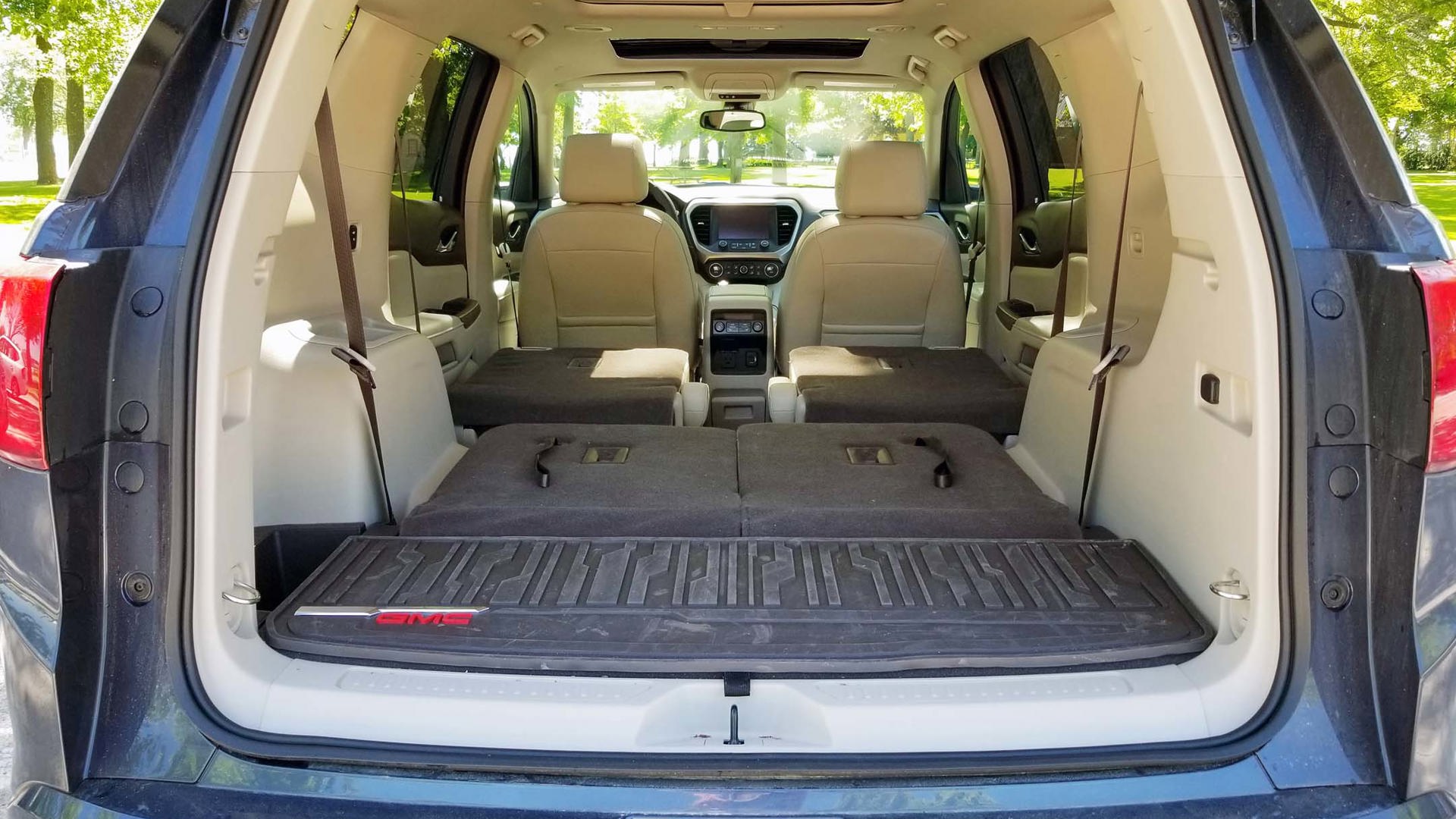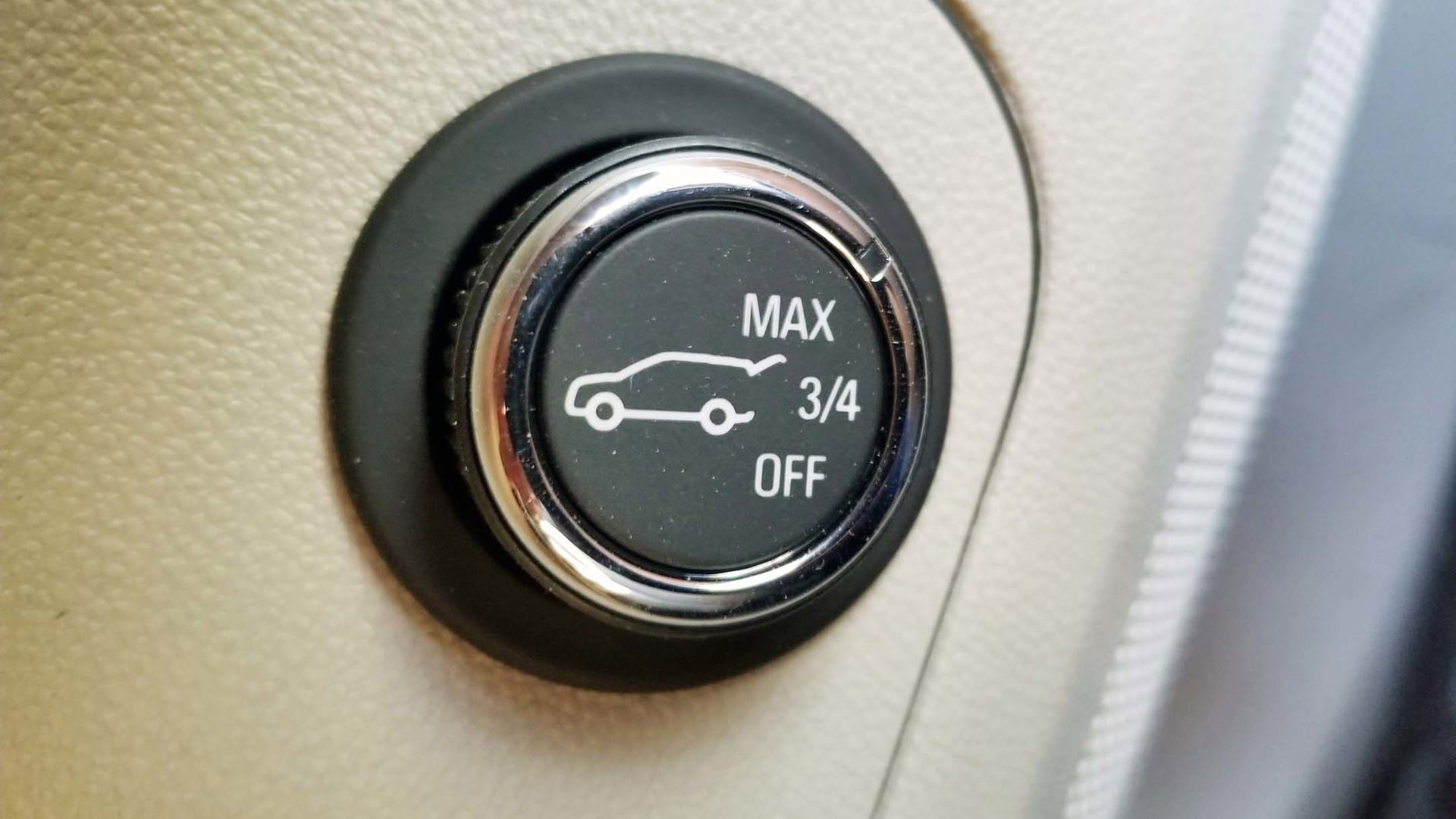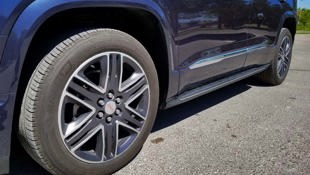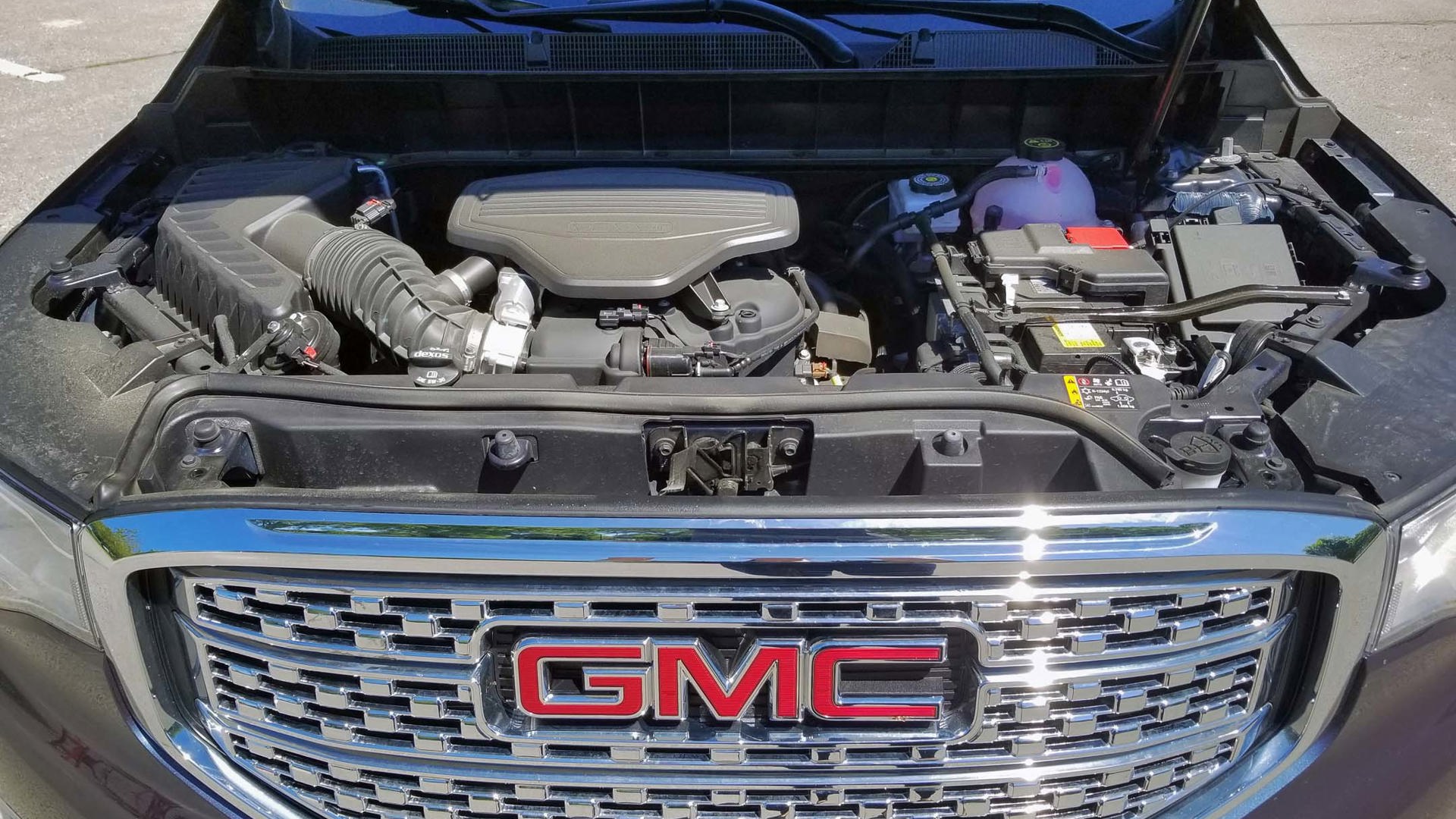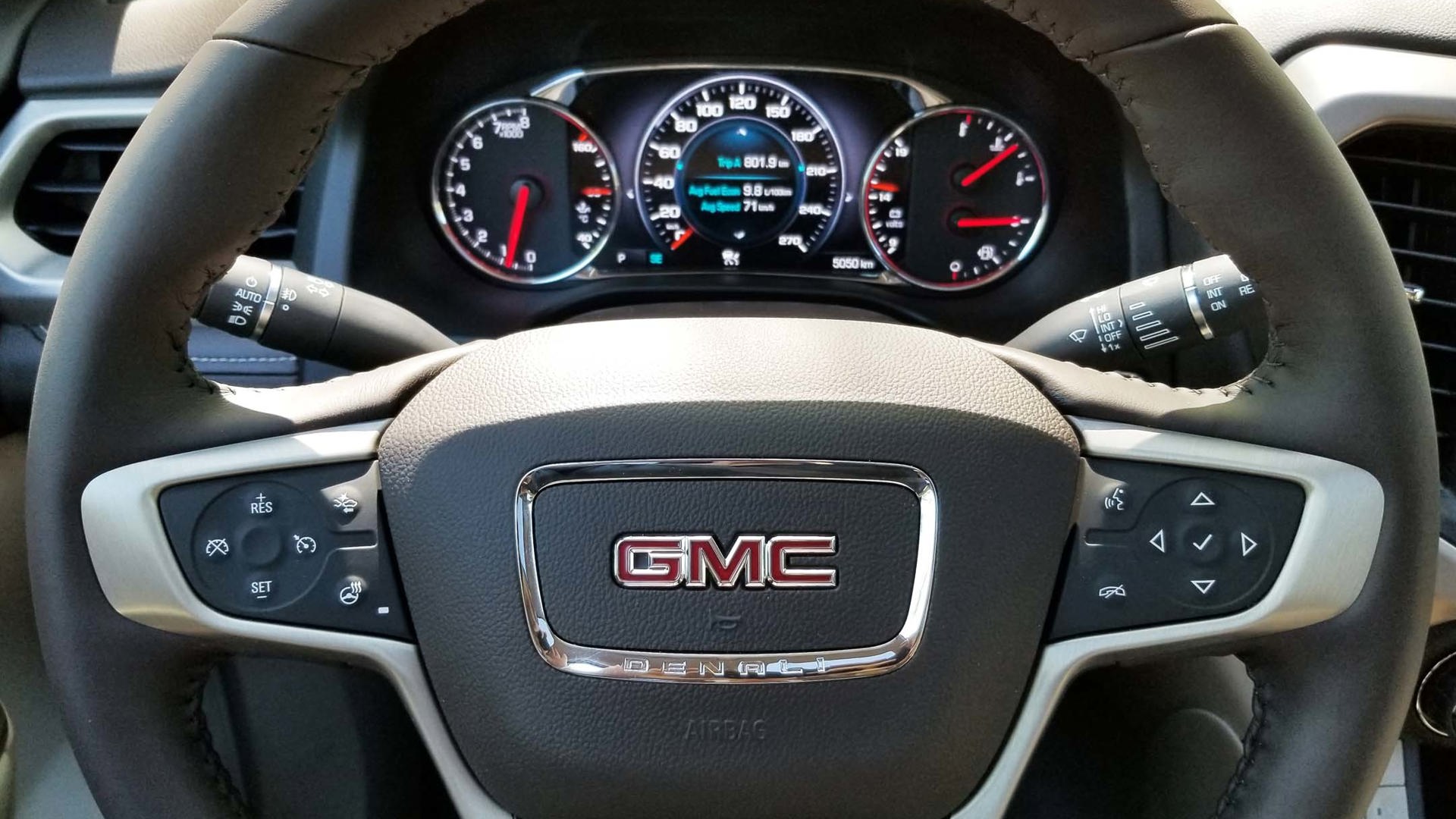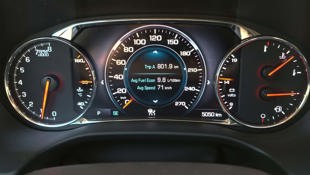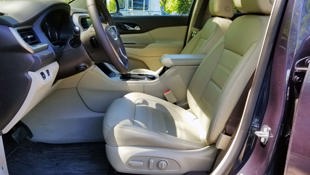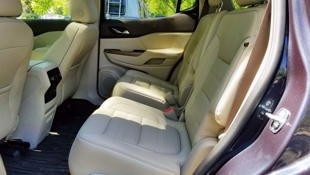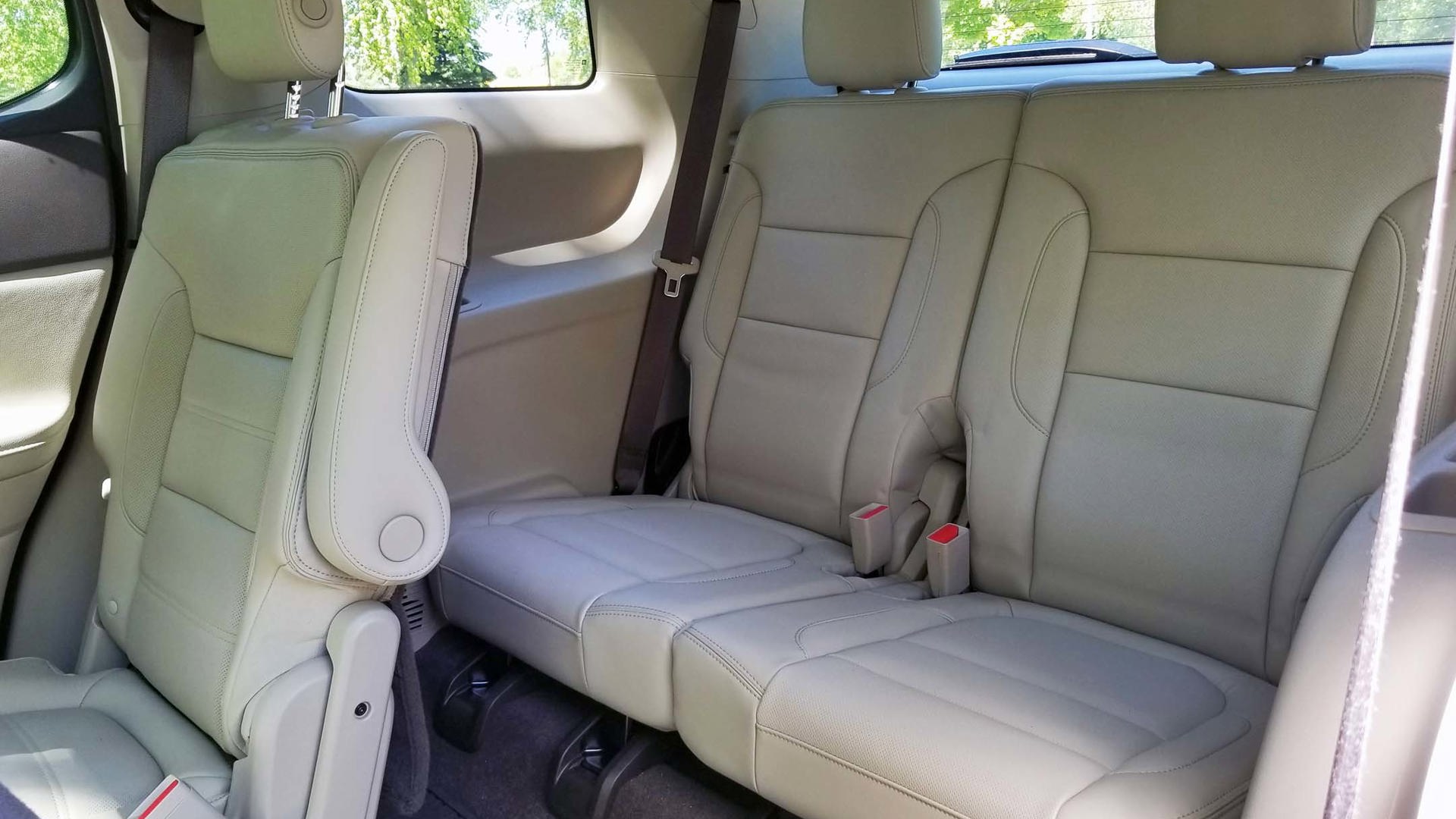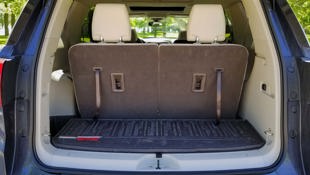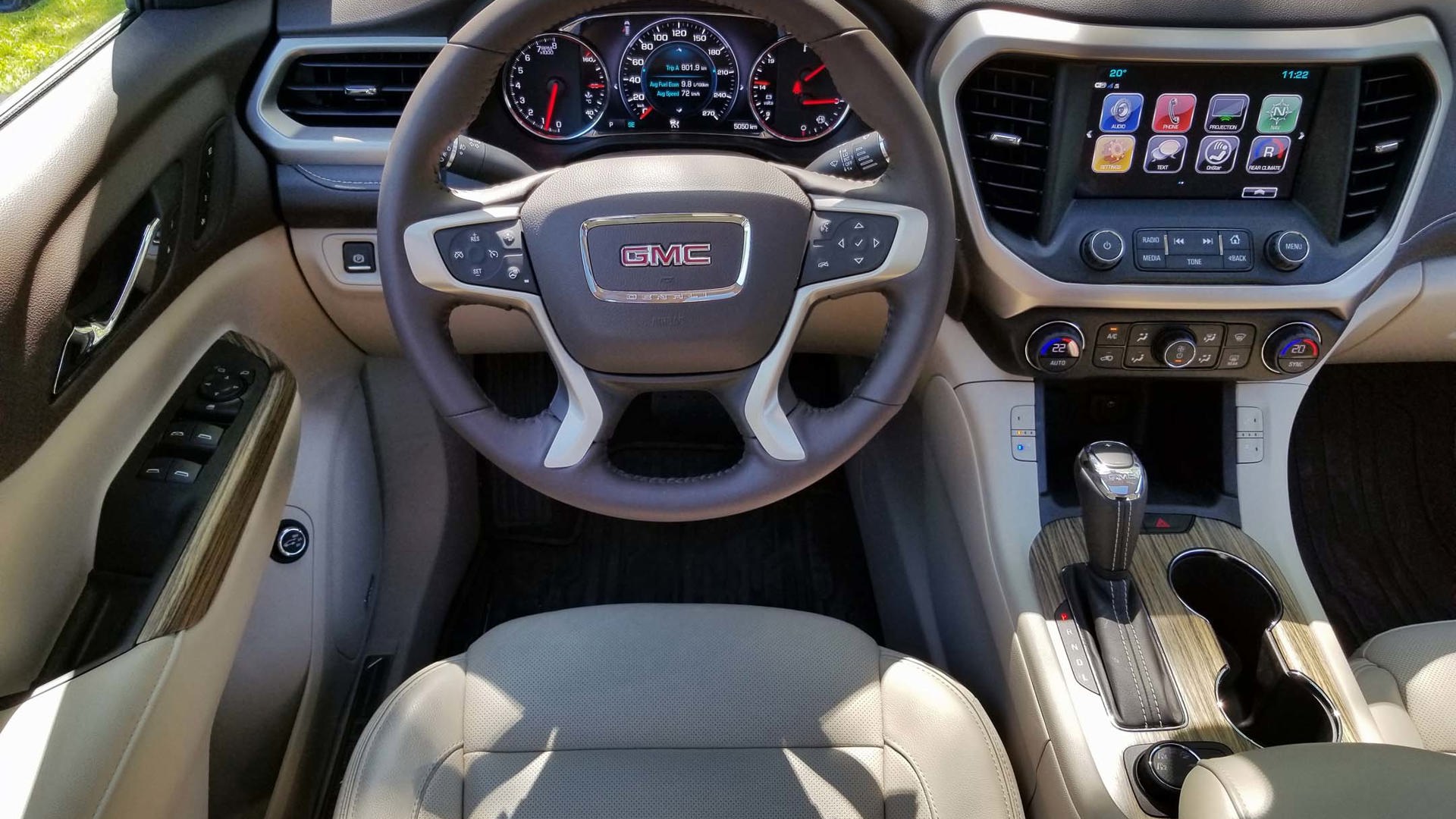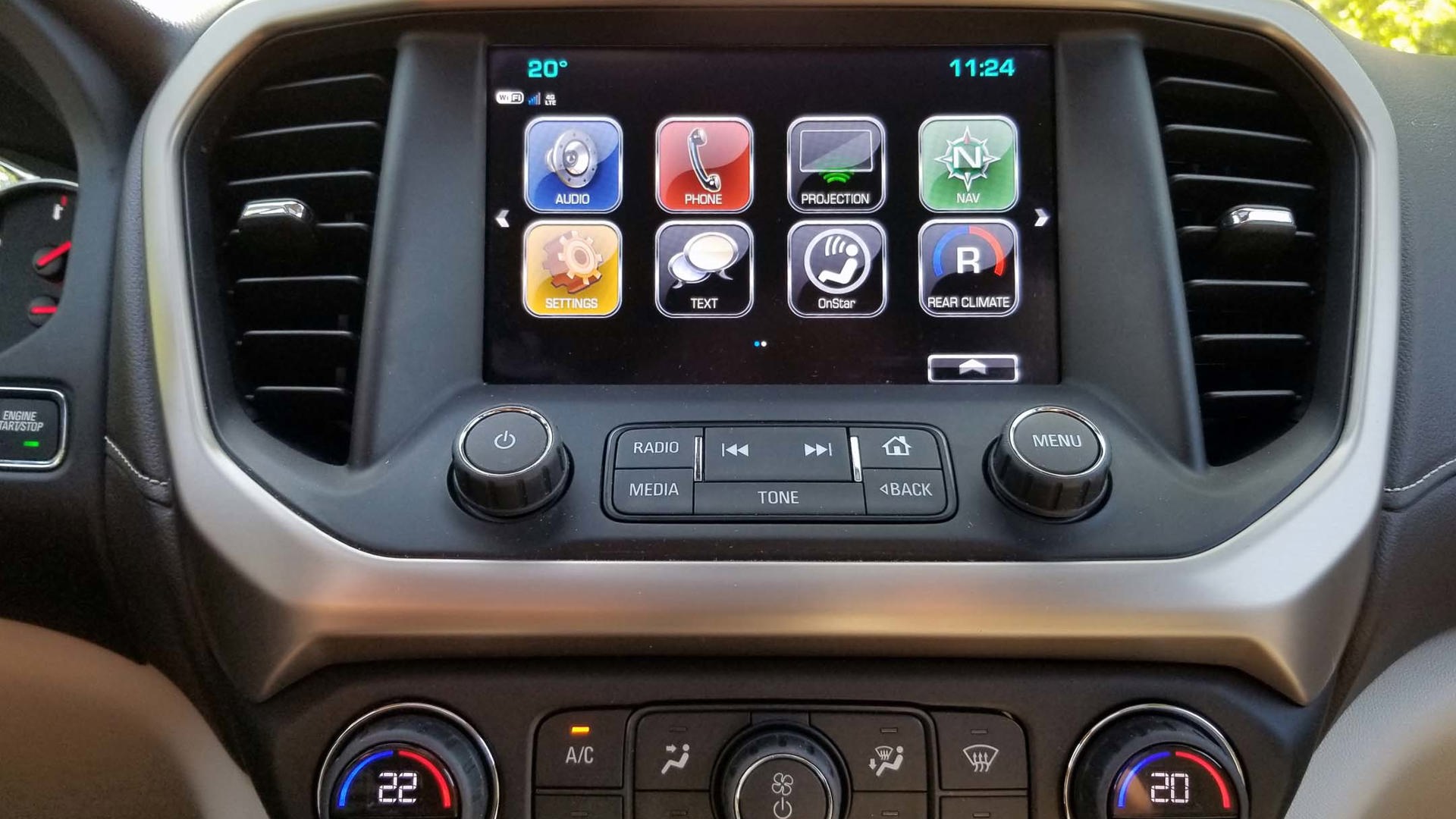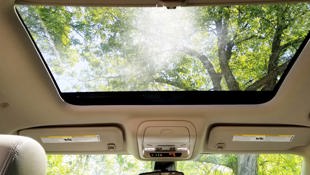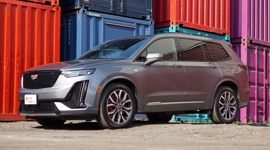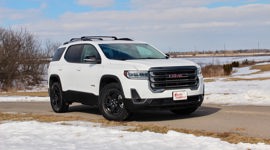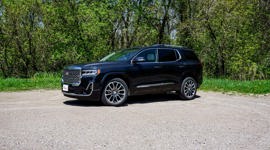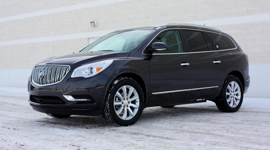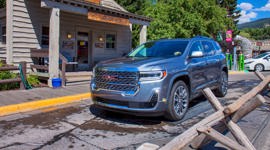 AutoTrader SCORE
AutoTrader SCORE
-
STYLING7/10
-
Safety7/10
-
PRACTICALITY8/10
-
USER-FRIENDLINESS7/10
-
FEATURES8/10
-
POWER7/10
-
COMFORT7/10
-
DRIVING FEEL7/10
-
FUEL ECONOMY8/10
-
VALUE7/10
Look, I’m going to level with you.
The GMC Acadia Denali is a very nice vehicle, but it may be different from what you expect.
When I first sat down in the 2018 GMC Acadia Denali, I did so with a set of expectations that turned out to be incorrect. I’m about to lay my mistakes out on the table for you so that you don’t make them yourself because I care about you and your buying choices.
I booked some time in an Acadia because I love the new Chevrolet Traverse and, without doing any research (bad automotive reviewer! bad!), I assumed that the second-generation Acadia would be essentially the same car as the Traverse but with some slight differences in finishes and trims, as it has been for years.
Well, it turns out I missed the memo: since their redesigns, these two nameplates have been sent in different directions by General Motors. Both are based on GM’s C1XX architecture (which, for you nerds out there, is somehow pronounced “chi”), but the Traverse is on the long-wheelbase version and the Acadia is on the short wheelbase since it’s been repositioned as a mid-size SUV instead of being on the edge of full-size like the Traverse.
Perhaps you missed the memo, too. If so, read on. The GMC Acadia Denali is a very nice vehicle, but it may be different from what you expect.
Differences in Powertrain
The Acadia Denali comes with the larger Acadia engine offering as standard, the 3.6-litre naturally aspirated V6 with variable valve timing that produces 310 hp and 271 lb-ft at 5,000 rpm.
This might lead you to believe that the Acadia has the same powertrain characteristics as the Traverse, but it doesn’t at all. While horsepower output from both V6 engines is the same, the Traverse comes with a nine-speed automatic and hits its peak torque of 266 lb-ft at 2,800 rpm, which feels more presently available in everyday driving.
The Acadia, on the other hand, has a six-speed automatic transmission and slightly more torque at 271 lb-ft, but the torque curve is different as that power becomes fully available at 5,000 rpm. While around-town power feel in the Acadia is fine – I don’t think I’d want to try to live with any less in a nearly 4,000 lb vehicle – the Traverse (to my memory, bearing in mind that I drove these not back-to-back but several months apart) has a nicer setup for daily errands.
There’s a slight difference in towing capacity as well. The Traverse, when equipped with its V6, is rated for up to 5,000 lb with the available trailering package, but the Acadia tops out at 4,000 lb.
The Traverse’s nine-speed helps it to not have horribly worse fuel economy figures than the Acadia despite its higher weight: NRCan rates the Traverse at 13.7/9.4/11.8 L/100 km city/highway/combined, while the Acadia rates at 13.5/9.5/11.7 L/100 km. To be fair, my experience with the Acadia was significantly better. After a week of one three-hour highway run, about double that time doing easy-going rural road speeds, and maybe another hour or two of city driving, I returned it showing a reading of 9.8, which I was very happy with.
Differences in Wheelbase
As I mentioned, these two vehicles are now on different wheelbase configurations of the same platform. While the Traverse has the 3,071 mm (120.9 in) long wheelbase, the Acadia was shrunk down to 2,858 mm (112.5 in).
Translate this into my real-world experience, and I found that the Acadia feels a little less stable and exhibits more body roll than the Traverse does – and yet, oddly, I still found it awkward to park despite having that much less vehicle to manage.
Similar in Design
One way in which the Acadia has stayed connected to the Traverse is in design, which to my eye is a good thing. I’m not normally a fan of the visible C-pillar and wrap-around rear window look, but here I think it works. The bold and expansive GMC grille exudes toughness, and this tester’s attractive (but very expensive) 20-inch wheels set it off perfectly.
I’m not necessarily such a great fan of the interior. It’s not possible to option your way out of the faux-wood inserts, which is a shame because they definitely come off as faux – and meanwhile, it’s possible to get real wood trim in, say, a Mazda CX-9 Signature, which starts at a lower price point.
It’s worth noting that six-passenger seating is standard on the Denali trim with two rows of bucket seats and two seats in the third row (which is relatively tight and probably not suited to adults for long trips, but it would work well for kids). Seven-row seating with a second-row bench is available as a no-cost option. I found the second-row seat more challenging than average to move forward – I pinched my finger on the latch a couple of times, in fact – and ended up sending children through the middle of the bucket seats to get to the third row, so it would be worth trying this out for yourself before deciding on the seven-seat setup.
Identical in infotainment
I’m a fan of the current General Motors infotainment system. It’s mostly button-based and easy to navigate, Apple CarPlay and Android Auto are standard, and you can add a 4G LTE Wi-Fi hotspot with a subscription (though whether this is cheaper than just making a hotspot out of your phone is worth looking into). It doesn’t have the most beautiful interface or fancy features like SiriusXM favouriting or recording, but on the whole, it does its job better than most systems on the market.
Desirable Safety Features
With all the hot weather this summer has brought with it, the issue of children being left in hot cars is rearing its ugly head again. That simple ding that GM’s rear seat reminder makes to remind you that someone may be in the back seat, provided you’re not the sort of person who would start to ignore it over time, could make all the difference.
In the Denali trim, the Acadia comes with rear seat reminder as standard, as well as the Driver Alert Package II set of safety and assistance features, which includes low-speed automatic braking with pedestrian detection, front and rear park assist, forward collision alert, lane-keep assist, automatic high-beams, and the driver’s seat with haptic feedback (which, as much as I try to be prepared for it, startles me every time). Adding the technology package, as this tester does, equips adaptive cruise control, forward automatic braking, and a surround-vision camera.
Verdict
I went into this test drive expecting to come out raving about how great the Acadia Denali is, and for a variety of reasons that didn’t happen. The repositioned Acadia sits in more direct competition with a different set of excellent vehicles than it used to – think Kia Sorento, Honda Pilot, Toyota Highlander, Mazda CX-9 – and among that crop this Denali model is expensive relative to other top trims. Buyers who prioritize modern infotainment and key GM safety features like rear seat reminder and teen driver function are the ones most likely to push it to the top of their shopping list.
| Engine Displacement | 3.6L |
|---|---|
| Engine Cylinders | V6 |
| Peak Horsepower | 310 hp |
| Peak Torque | 271 lb-ft @ 5,000 rpm |
| Fuel Economy | 13.5/9.5/11.7 L/100 km city/hwy/cmb |
| Cargo Space | 362/1,180/2,237 L behind 3rd/2nd/1st row |
| Model Tested | 2018 GMC Acadia Denali |
| Base Price | $52,800 |
| A/C Tax | $100 |
| Destination Fee | $1,795 |
| Price as Tested | $65,105 |
|
Optional Equipment
$10,410 – 20-inch ultra-bright machined aluminum wheels with satin graphite pockets $3,225; technology package $1,795; dual-panel sunroof with sliding front and fixed rear $1,685; continuously variable real-time damping suspension $1,395; exterior convenience package $1,225; blue steel metallic paint $495; interior protection package $440; block heater $150
|
|
